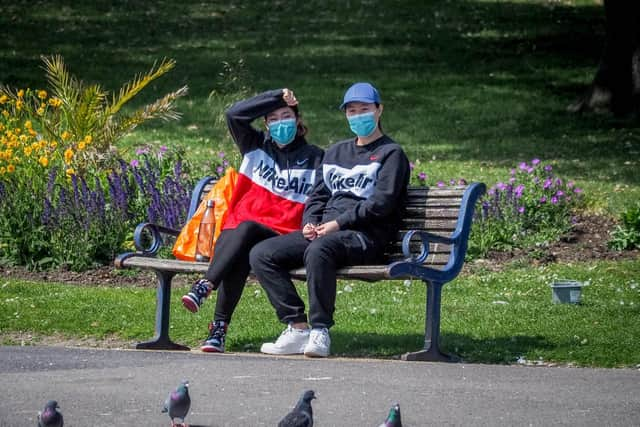Do I have hay fever or Omicron? Here are the different symptoms to watch for
and live on Freeview channel 276
However it is not just Covid we have to worry about with other seasonal viruses and affliction floating around.
Summer has arrived and many people will be worrying about hay fever.
Advertisement
Hide AdAdvertisement
Hide AdCases of coronavirus have begun to rise across the UK once again.


But how can you tell if you have Covid or if you have hay fever?
Here are the different symptoms to watch for.
Here’s what the NHS website says:


Coronavirus and omicron symptoms
After more than two years of the pandemic, you are probably well versed in the symptoms of Covid, but if you need reminding – here’s what the NHS website says.
The main symptoms for adults and children:
- a high temperature – this means you feel hot to touch on your chest or back (you do not need to measure your temperature)


Advertisement
Hide AdAdvertisement
Hide Ad- a new, continuous cough – this means coughing a lot for more than an hour, or 3 or more coughing episodes in 24 hours (if you usually have a cough, it may be worse than usual)
- a loss or change to your sense of smell or taste – this means you've noticed you cannot smell or taste anything, or things smell or taste different to normal
The NHS recently added the following symptoms:
- shortness of breath
- feeling tired or exhausted
- an aching body
- a headache
- a sore throat
- a blocked or runny nose
- loss of appetite
- diarrhoea
- feeling sick or being sick
Hay fever symptoms
The NHS says that symptoms of hay fever include:
- sneezing and coughing
- a runny or blocked nose
- itchy, red or watery eyes
- itchy throat, mouth, nose and ears
- loss of smell
- pain around your temples and forehead
- headache
- earache
- feeling tired
If you have asthma, you might also:
- have a tight feeling in your chest
- be short of breath
- wheeze and cough
Hay fever will last for weeks or months, unlike a cold, which usually goes away after 1 to 2 weeks.
The Met Office says: ‘Tree pollen occurs first, typically from late March to mid-May. Grass (which actually has two peaks) lasts from mid-May until July, and weed pollen covers the end of June to September. Tree pollen occurs first, typically from late March to mid-May, and affects around 25% of people.’
Common cold symptoms
Advertisement
Hide AdAdvertisement
Hide AdOn the NHS website, it says that cold symptoms come on gradually and can include:
- a blocked or runny nose
- a sore throat
- headaches
- muscle aches
- coughs
- sneezing
- a raised temperature
- pressure in your ears and face
- loss of taste and smell
The symptoms are the same in adults and children. Sometimes symptoms last longer in children.
Flu symptoms
These are the signs of flu to watch out for, according to the NHS.
- a sudden high temperature of 38C or above
- an aching body
- feeling tired or exhausted
- a dry cough
- a sore throat
- a headache
- difficulty sleeping
- loss of appetite
- diarrhoea or tummy pain
- feeling sick and being sick
What to do if you have Covid symptoms?
- Get a PCR test (test that is sent to a lab) to check if you have COVID-19 as soon as possible.
Advertisement
Hide AdAdvertisement
Hide Ad- Stay at home and do not have visitors (self-isolate) until you get your test result – only leave your home to have a test
A message from the Editor, Mark Waldron
We’ve reduced the cost of digital subscriptions to our website by 50 per cent for a limited time.
You can now subscribe here for unlimited access to our online coverage, including Pompey, for less than 13p a day.
Comment Guidelines
National World encourages reader discussion on our stories. User feedback, insights and back-and-forth exchanges add a rich layer of context to reporting. Please review our Community Guidelines before commenting.